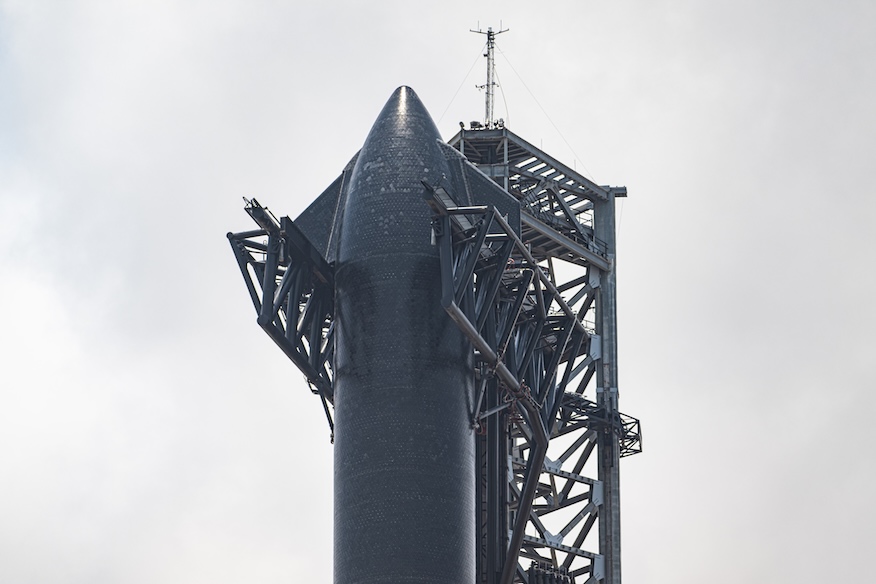
The Federal Aviation Administration is preparing to gather public input on SpaceX Starship launch operations at NASA’s Kennedy Space Center. The request for comments comes about a month after the conclusion of an environmental review of a 100-acre expansion for SpaceX at its Hangar X site.
The pair of projects highlight an ongoing ramp up of activity for a company that aims to launch more than 140 Falcon launches by the end of 2024, most of them from Florida’s Space Coast.
“SpaceX draws a lot of attention. There’s no question about it. They’re doing a lot of amazing things and they draw a lot of attention from the public, not just locally or regionally, but worldwide,” said Don Dankert, the technical lead of the Environmental Management Branch at NASA’s Kennedy Space Center.
On June 12 and 13, the Federal Aviation Administration (FAA) will host a series of public scoping meetings to inform the public and answer questions about SpaceX’s proposal to launch Starship from Launch Complex 39A (LC-39A). There will also be a virtual meeting on June 17 for those unable to attend in person.
- June 12 – 2-4 p.m. ET, 6-8 p.m. ET at the Radisson Cape Canaveral, 8701 Astronaut Blvd, Cape Canaveral, Florida 32920
- June 13 – 6-8 p.m. ET at the Kennedy Space Center Visitor Complex, Space Commerce Way, Merritt Island, Florida 32953
- June 17 – Virtual
Among those attending the public hearings will be representative of the Department of the Air Force, the U.S. Space Force, the U.S. Coast Guard, U.S. Fish and Wildlife Service, the Merritt Island National Wildlife Refuge, Canaveral National Seashore and SpaceX.
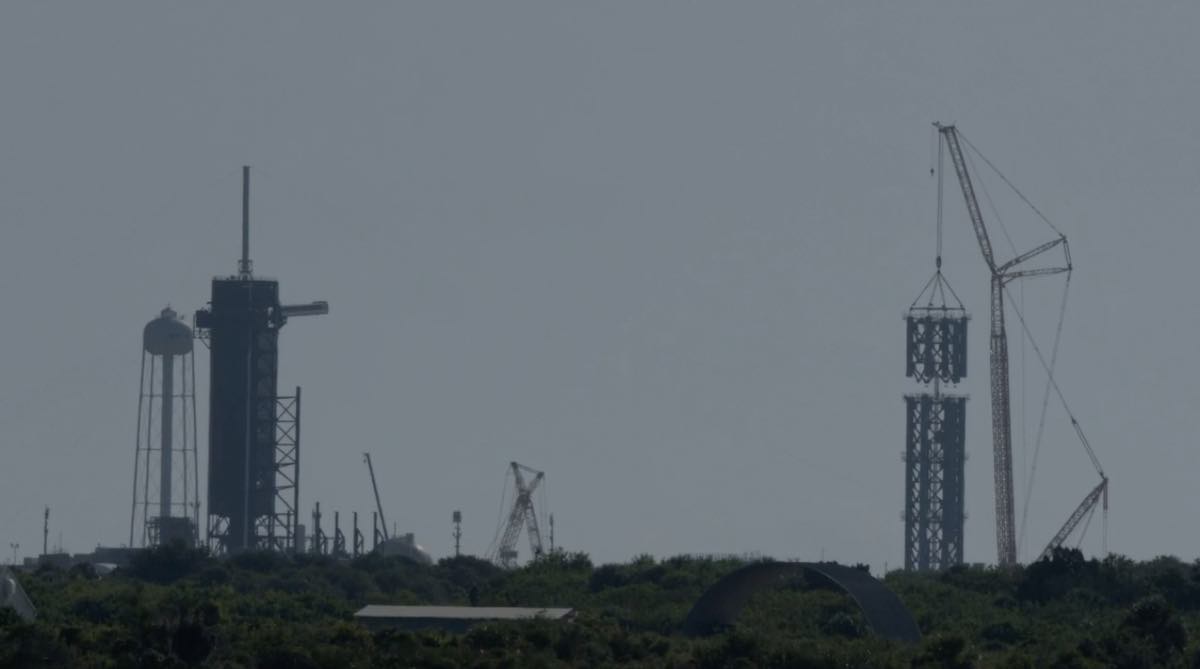
“Through scoping, you introduce the project to the public at large and others and you take that feedback and that’s really how we find that out: what are those key issues? What are the things, what are those areas that the public may have an elevated level of concern about?” Dankert said. “And that in turn will drive us to say, ‘Ok, we need to take a much harder look at this or delve in or maybe we didn’t consider that.”
Through the environmental impact statement (EIS) process, the FAA will lead a review of impacts from SpaceX Starship operations across a number of areas including air quality, coastal resources, land use, noise and water resources, among others.
The assessment is a follow-up to an EA prepared in 2019 for Starship launches.
“Since that time, there’s been changes in the vehicle configuration, the concept of operations, the infrastructure needs. And when SpaceX approached us with this, obviously they need an FAA license in order to operate at 39A at KSC,” Dankert said. “In looking at it, we scoped it as an EIS (environmental impact statement). In some sense, it will supplement or continue that analysis that we started in 2019.”
He said NASA requested that the FAA take on the role of the lead federal agency in this process, since they’re in charge of launch licenses.
“I think it gives us greater reliability and buys down some of the risk. The FAA is going to have exactly what they need to do their evaluation when it comes time for the licensing action,” Dankert explained. “KSC is what we call a ‘cooperating agency’ in the development of that document. So, we are fully engaged.”
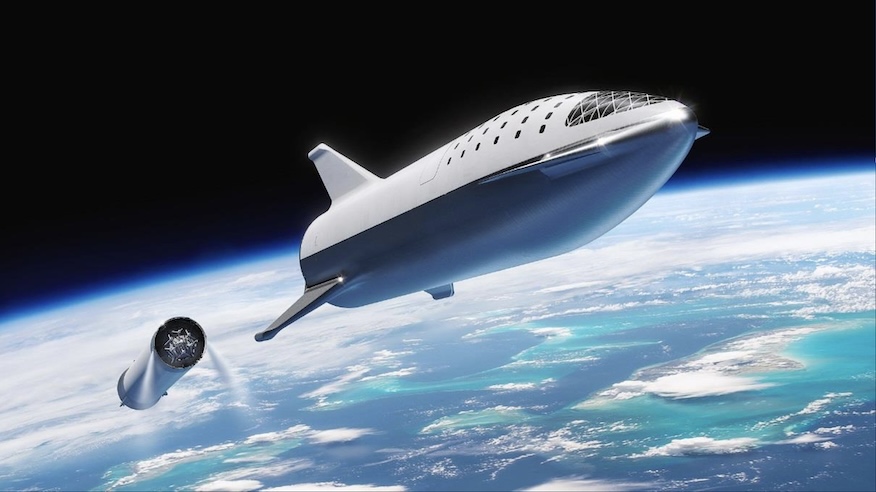
Back in 2019, SpaceX’s proposal was for 24 Starship launches per year, but with a different-looking Starship rocket. Back then, it was thought the upper stage would consist of seven Raptor engines and would land on either Landing Zone 1 (LZ-1) at Cape Canaveral Space Force Station (CCSFS) or on a droneship.
Meanwhile, the Super Heavy booster would consist of 31 Raptor engines and land on a droneship as well. There were no plans at the time for the booster to return for a landing at LC-39A.
“SpaceX now proposes to construct additional launch infrastructure not previously contemplated in the 2019 EA: a Super Heavy booster catch tower, a natural gas liquefaction system and air separation unit for propellant generation, and stormwater/deluge ponds,” the FAA wrote. It added in a separate document that SpaceX would likely use about 1 million gallons of deluge water per launch attempt.
“SpaceX also proposes to launch an advanced design of the Starship and Super Heavy vehicle (up to nine raptor engines for Starship and up to 35 raptor engines for the Super Heavy booster), operate at a projected higher launch tempo (up to 44 launches per year), and land the Super Heavy booster at LC-39A in support of its reusability concept. Starship landings are no longer proposed to occur at Landing Zone 1 at CCSFS.”
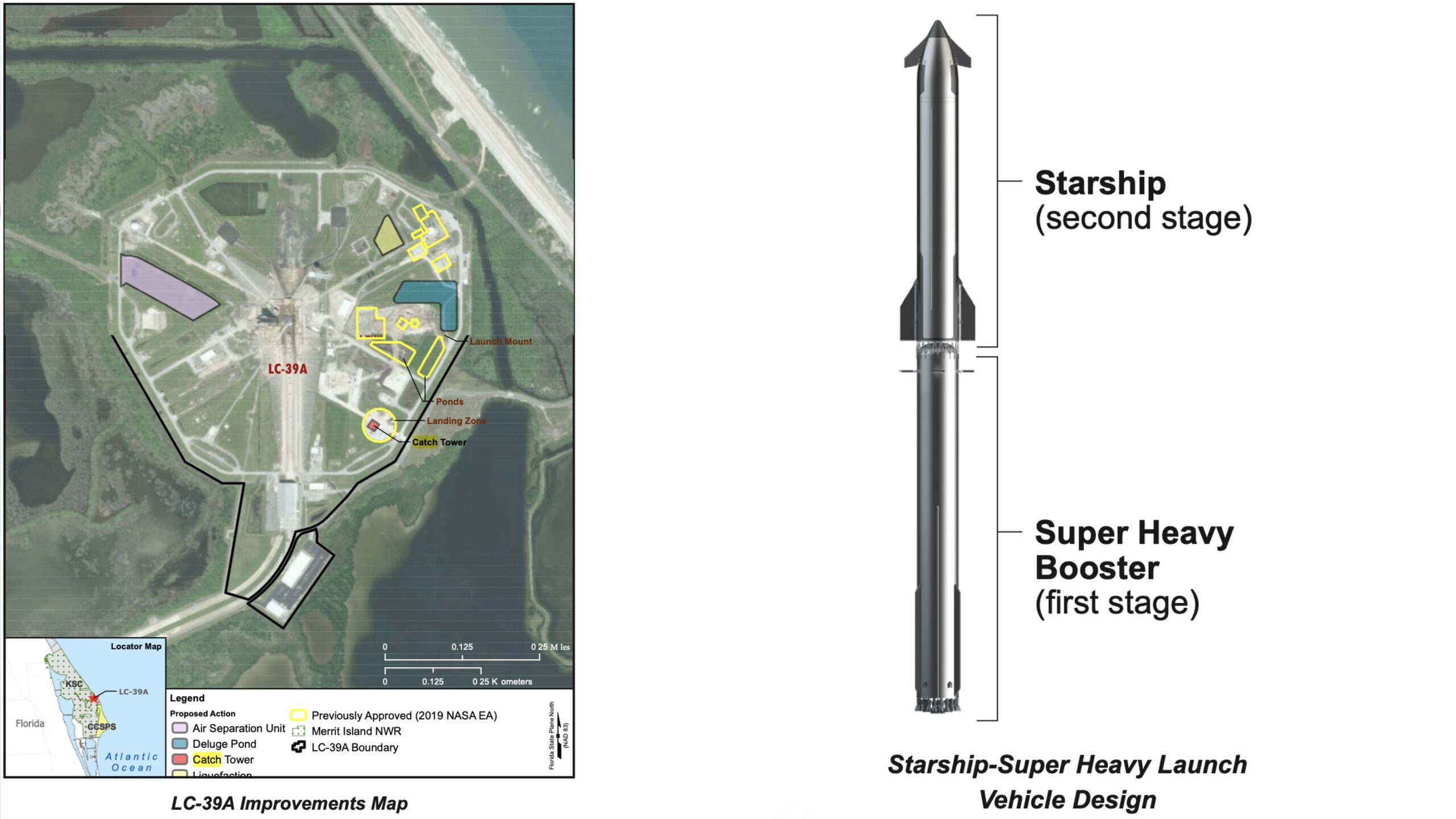
The new proposal would also give SpaceX the option to land the booster either at LC-39A, on a droneship, or expend it at least five nautical miles off the coast. A similar environmental assessment is being conducted by the Department of the Air Force for Starship operations at Space Launch Complex 37, the former home of United Launch Alliance’s Delta 4 Heavy rocket.
In an FAA document outlining the proposal from SpaceX, the agency said there is no alternative option that is a reasonable change of course from the primary proposal. It argued that “the only alternative to the Proposed Action as described in this EIS is the No Action Alternative.”
“LC-39A could provide time-critical mission capability to NASA for near-term lunar exploration on the NASA Artemis and Human Landing System programs,” the FAA wrote. “In addition to NASA’s mission-critical requirements, LC-39A would provide launch site diversity for Starship-Super Heavy to serve commercial exploration interests.”
The FAA also offered a glimpse into the future versions of the fully integrated Starship rocket, stating that it “is expected to be up to 492 feet (150 meters) tall depending on configuration and approximately 30 feet in diameter.” That’s in comparison to the vehicle launching today, which is only 397 feet (121 meters) tall.
The document also states that the upgraded version of Starship will include 35 Raptor engines for the Super Heavy booster and nine for the upper stage.
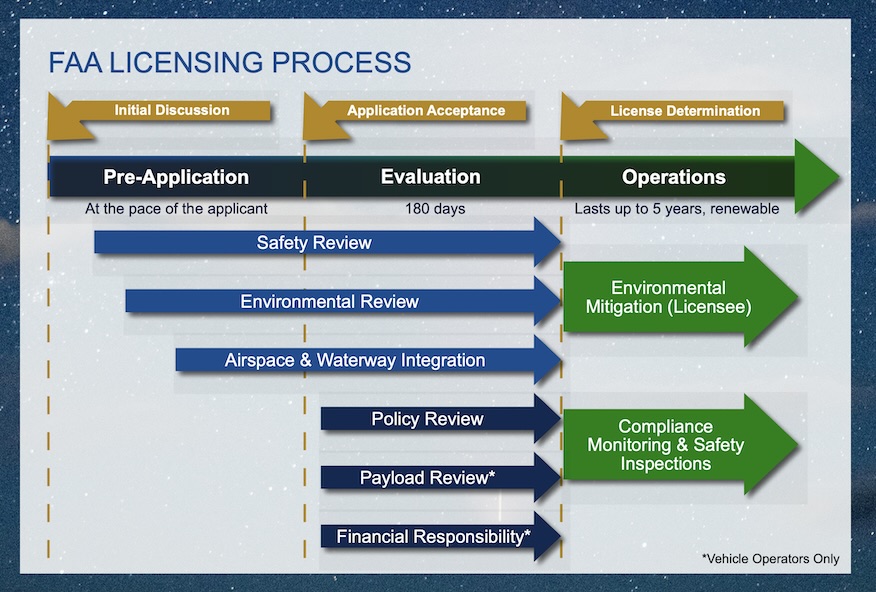
100-acre no more woods
In addition to the Starship launch proposal, KSC has been busy with another SpaceX request. Dankert’s office spent the better part of two years reviewing a proposal from SpaceX to extend their main footprint at KSC, known as at the Roberts Road campus, by 100 acres.
Under an environmental assessment (EA) approved in 2018, SpaceX has been making notable expansions and improvements within its current 67 acres, but this new expansion aims to bring the majority of its assets around Brevard County to this one spot.
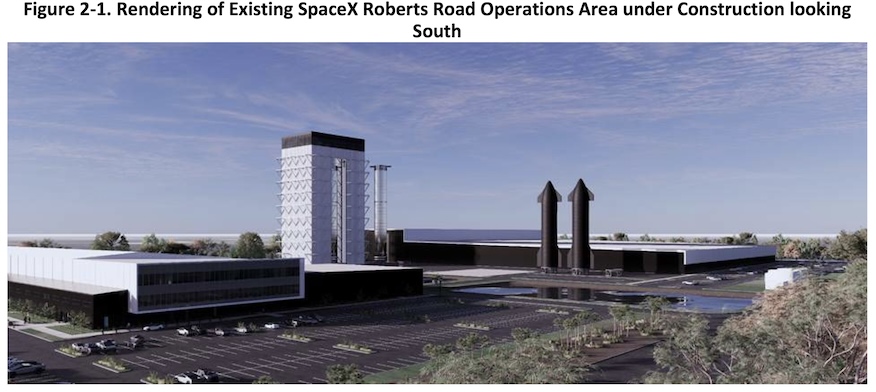
As is the case for any infrastructure project at KSC, that meant undergoing the federally mandated NEPA (National Environmental Policy Act) review. Part of that involves calling for public opinion on the general proposal near the start of the assessment and then calling for public comment once again once a draft EA is issued.
“We put the document out, publish it on the website and give the public at large, including all of our stakeholder agencies and others, an opportunity to read the document, look at the post-findings, and then provide formal comment back to the agency for us and SpaceX to consider in the development of the final document,” Dankert said.
After doing their due diligence and considering all of the feedback, this spring, NASA issued a FONSI (finding of no significant impact), which paves the way for SpaceX to move forward with its expansion plans. The next step in that process is for SpaceX to establish a lease agreement with KSC.
“That is in work, in the final stages of executing that actual agreement between NASA and SpaceX,” Dankert said.
The transformation of this hundred acre plot of land won’t be a quick process. Part of SpaceX’s ability to develop the space will be submitting a site plan to NASA “with additional details on building dimensions and site layout,” according to the FONSI document.
“The KSC site plan review process identifies potential constraints including land use, operational conflicts, natural resources, line-of-sight, safety, and security, and ensures that the SpaceX plan complies with this SEA,” the document stated. “SpaceX would implement changes as required by NASA.”
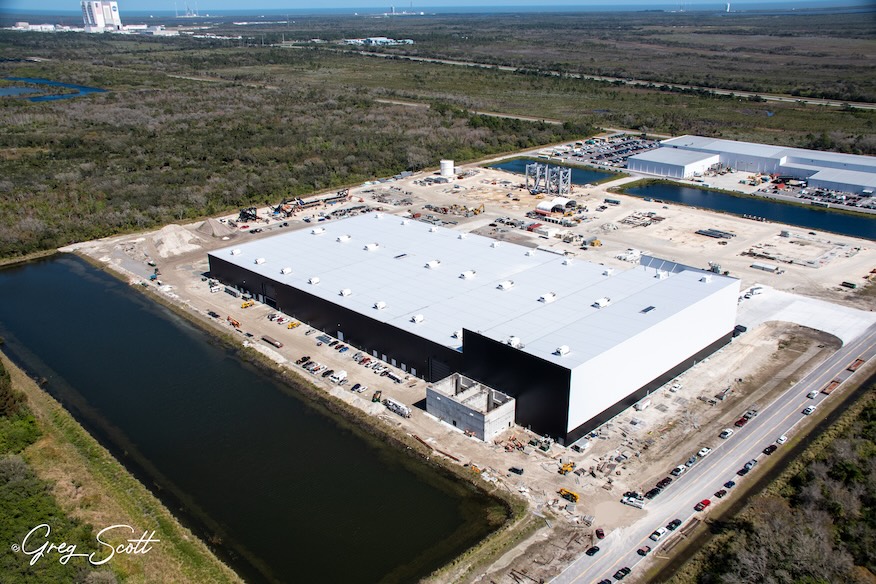
Details of SpaceX’s future expansion remain largely held to the chest, but the documentation does provide some crumbs of information. For instance, in the biological opinion, prepared by the U.S. Fish and Wildlife Service’s (FWS) Florida Ecological Services Field Office (FESFO), there are references to buildings that will stand as tall as 400 feet.
“The Action proposes the construction of multiple towers up to 400 feet in height,” Robert Carey, manager of the Division of Environmental Review in the FESFO, wrote in his report. “Thought the Action is located approximately six miles from the closest nesting beach, the height of these towers has the potential to be seen by nesting sea turtles during the sea turtle nesting season.”
For reference, the Statue of Liberty is about 305 feet (about 93m) in height and the current iteration of Starship’s Super Heavy booster is 232 feet (about 71m).
Even with the FONSI now issued, Dankert and his office will continue to work with SpaceX on the future of the site.
“When SpaceX starts to develop their finalized plans, we have an opportunity to review those and ensure that they’re using turtle-friendly lighting as they can, where applicable,” Dankert said. “Even though it is a good distance from the beach, that can contribute to what we call ‘sky glow’ out on the beach.”
“SpaceX has a great environmental staff that we work very closely with continually through land development, construction and then future operations.”
- SEO Powered Content & PR Distribution. Get Amplified Today.
- PlatoData.Network Vertical Generative Ai. Empower Yourself. Access Here.
- PlatoAiStream. Web3 Intelligence. Knowledge Amplified. Access Here.
- PlatoESG. Carbon, CleanTech, Energy, Environment, Solar, Waste Management. Access Here.
- PlatoHealth. Biotech and Clinical Trials Intelligence. Access Here.
- Source: https://spaceflightnow.com/2024/06/12/faa-nasa-seek-public-input-on-spacex-starship-launches-at-the-kennedy-space-center/



